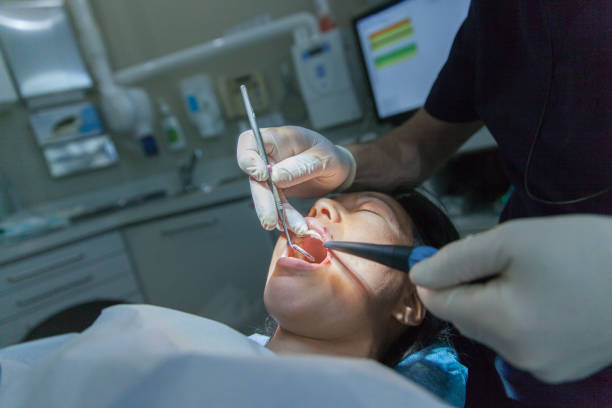Introduction to Tooth Removal
Maintaining good dental health is essential for overall well-being, and sometimes, tooth removal becomes necessary to alleviate pain and prevent further oral health issues. Tooth removal, also known as dental extraction, is a common procedure performed by dentists to remove a damaged or decayed tooth.
Common Reasons for Tooth Removal
There are several reasons why a tooth may need to be removed, including severe tooth decay, advanced gum disease, and impacted wisdom teeth. In some cases, tooth removal may be necessary to make room for orthodontic treatment or to prepare for a dental prosthesis.
Types of Tooth Removal Procedures
Tooth removal procedures can be classified into two main categories: simple extraction and surgical extraction. Simple extraction is typically performed on visible teeth that are easily accessible, while surgical extraction may be required for teeth that are impacted or broken below the gumline.
Preparing for Tooth Removal
Before undergoing tooth removal, it's essential to schedule a consultation with a dentist to discuss your options and determine the best course of treatment. Your dentist will provide you with pre-surgery instructions to follow, such as fasting before the procedure and avoiding certain medications.
The Tooth Removal Process
The tooth removal process begins with the administration of local anesthesia to numb the area around the tooth. Once the area is numb, the dentist will use specialized instruments to loosen the tooth and remove it from the socket. In some cases, stitches may be placed to aid in healing.
Recovery and Aftercare
After tooth removal, it's normal to experience some discomfort and swelling in the affected area. Your dentist will provide you with post-operative care instructions to follow, including taking prescribed medications, applying ice packs to reduce swelling, and avoiding strenuous activities.
Benefits of Tooth Removal
The primary benefit of tooth removal is relief from pain and discomfort caused by a damaged or decayed tooth. Additionally, tooth removal can prevent further oral health issues such as infection and decay, improving overall oral health and well-being.
Potential Risks and Complications
While tooth removal is generally safe, like any medical procedure, it carries some risks. These may include bleeding, infection, and damage to surrounding teeth or tissues. However, by choosing an experienced dentist and following post-operative care instructions, the risk of complications can be minimized.
Choosing the Right Dentist
When it comes to tooth removal, choosing the right dentist is essential for a successful outcome. Look for a dentist who has experience performing tooth removal procedures and who makes you feel comfortable and confident in their care.
Cost Considerations
The cost of tooth removal can vary depending on factors such as the complexity of the procedure and your location. However, investing in tooth removal is an investment in your oral health and overall well-being. Many dental practices offer financing options to help make treatment more affordable for patients.
Alternative Treatment Options
In some cases, tooth removal may not be the best option for restoring a tooth. Alternative treatment options may include dental implants, bridges, or dentures. Your dentist can help you explore all available options and determine the best course of treatment for your individual needs.
Real-Life Patient Stories
Many patients have undergone successful tooth removal procedures and experienced significant improvements in their oral health and quality of life as a result. Hearing firsthand accounts from these patients can provide reassurance and encouragement for individuals considering tooth removal themselves.
Debunking Myths and Misconceptions
Tooth removal is often surrounded by myths and misconceptions, leading many people to fear or avoid the procedure altogether. However, the reality is that tooth removal is a safe and effective way to alleviate pain and prevent further oral health issues. By debunking common myths, we hope to alleviate any concerns you may have about undergoing tooth removal.
Is Tooth Removal Right for You?
If you're experiencing dental issues such as severe tooth pain, swelling, or infection, tooth removal may be the solution you need to restore your oral health and alleviate discomfort. Schedule a consultation with a qualified dentist to discuss your symptoms and determine whether tooth removal is the right choice for you.
Conclusion
Tooth removal is a valuable dental procedure that can alleviate pain, prevent further oral health issues, and improve overall quality of life. By prioritizing dental health and seeking timely treatment when needed, you can enjoy a healthy, comfortable smile for years to come.
FAQs
- How long does it take to recover from tooth removal?
- Recovery from tooth removal typically takes about one to two weeks, although individual healing times may vary. Most patients can resume their normal activities within a few days of the procedure.
- Will I need to take time off work after tooth removal?
- Most patients can return to work and resume their normal activities immediately after tooth removal. However, it's essential to follow your dentist's post-operative instructions and avoid strenuous activities that could interfere with the healing process.
- Is tooth removal covered by insurance?
- Many dental insurance plans cover some or all of the cost of tooth removal, especially if it's deemed medically necessary. However, coverage can vary depending on your specific plan and the reason for the procedure.
- Can I drive myself home after tooth removal?
- It's generally safe to drive yourself home after tooth removal, especially if you've only received local anesthesia. However, if you've been given sedation or general anesthesia, you'll need to arrange for someone to drive you home.
- What should I eat after tooth removal?
- After tooth removal, it's best to stick to soft foods that are easy to chew and won't irritate the extraction site. This may include yogurt, mashed potatoes, scrambled eggs, and smoothies.





Comments